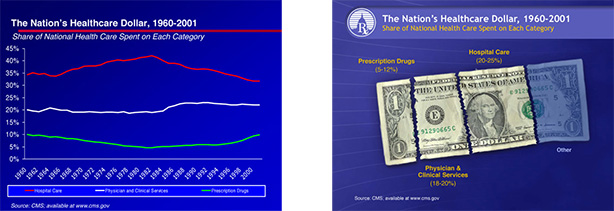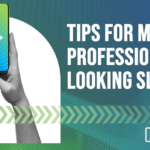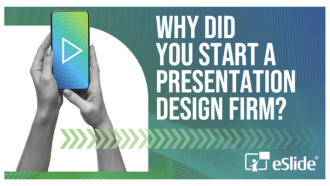10 Steps to Professional PowerPoint Presentation Slide Design Inspiration
Are you in need of a little design inspiration for your upcoming PowerPoint presentation? Got facts and figures that will wow your board but wanting something more than bullet points and bar charts to show them off?
Various research studies have shown that presenting messages via strong, relevant visuals have a much greater effect than long runs of bullets or data charts. The reported increase in message retention and subsequent action (i.e. the reasons you present in the first place) vary from 20-50% depending on the study – but we hold these truths to be self-evident; after all which slide would you rather see in a business PowerPoint presentation:
Unfortunately, design inspiration doesn’t always strike when you need it to. And it can be especially elusive when a deadline on an important presentation is looming. The PowerPoint Muse is a fickle creature.
To help you get creative for your next professional PowerPoint presentation, here are eSlide’s 10 steps to slide design inspiration:
- Take photos of designs you like wherever you see them, e.g., in magazines, in museums, on billboards, etc. (Carry a small notebook with you to jot ideas down if you prefer.) Great designs are everywhere, so be ready to capture them to use as inspiration when you need it.
- Revisit some of your (or colleagues) past professional PowerPoint presentations. Use the best design ideas to guide your creative process. We aren’t suggesting that you copy, but there’s no harm in using past ideas to jump start your process.
- Watch great TED Talks on topics related to design, like former journalist and communications expert Dave Grady. TED presenters have professionally-designed presentations, so their slides are good examples of appropriate use of visuals to create an engaging story.
- Find inspiration in your life. If a personal experience or story will add value to your presentation, don’t be afraid to include it. Often our own lives provide some great source material, but you have to be open to this possibility to take advantage of its potential.
- Get some digital downtime each day and let your mind wander. In his book, The Organized Mind, Neuroscientist Daniel J. Levitin talks about the importance of allowing our brains time to daydream so that they can be more effective when we need them to be.
- Turn off your digital devices while you are working on your presentation. In his book, Levitin explains why multi-tasking is a myth. He explains that what you’re really doing is switching your attention quickly from task to task. So instead, spend some time focusing on your presentation alone. Your smartphone, tablet and laptop will all be there when you’re done.
- Develop a routine when working on your presentations. If you are at your best first thing in the morning, do your creating then. Often our best ideas come to us when we are fresh and our brains haven’t been inundated with a day’s worth of sensory input.
- Sketch out your ideas – without worrying about how crude your sketches may be. The process will help you discover what’s important, allowing you to strip out unnecessary detail. eSlide designers use this technique in our high-impact Custom PowerPoint Design service.
- Take a fresh look the following day. Before you send your professional PowerPoint presentation off to be reviewed by others, read it again yourself. This will help you weed out elements that may not be as critical as you first thought.
- Seek expert design advice for your professional PowerPoint presentation. The team at eSlide has been creating amazing PowerPoint decks for more than 20 years. We know how to take your brilliant ideas and give them the wow factor. Get in touch with us today.










